Cleaning Your I-neb AAD

Once-a-day cleaning helps reduce the time from setup to cleanup
Making VENTAVIS part of the daily routine
- Carrying cases to help you organize your treatments so you only need to clean once a day
- 6 medication chamber lids with mesh, provided at no additional cost
- Distilled water protects the used chamber lids with mesh until your end-of-day cleaning
- Carrying cases make it easy for you to take VENTAVIS at home, work, or on the road
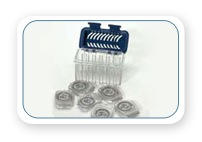 |
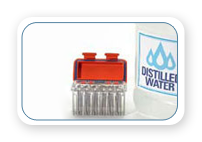 |
| Blue: carrying case for clean chamber lids with mesh | Orange: carrying case for used chamber lids with mesh |
Instructions for daily cleaning of your I-neb medication chamber
Starting the day
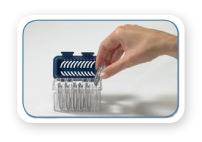 |
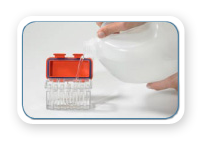 |
|
Load blue case with clean, dry chamber lids with mesh. |
Fill orange case with distilled water and close the lid. |
Taking VENTAVIS
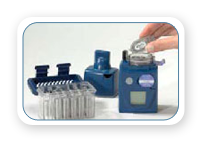 |
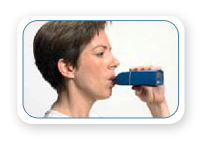 |
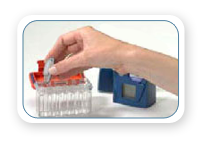 |
|
After you have placed VENTAVIS into the I-neb AAD medication chamber, remove a clean, dry chamber lid with mesh from the blue case. Place the chamber lid on top of the medication chamber, close the latch, and attach the mouthpiece. |
Take your VENTAVIS treatment. |
Remove the used chamber lid from on top of the medication chamber and place it in the orange case filled with distilled water. |
Once-a-day cleaning
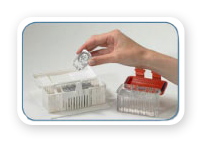 |
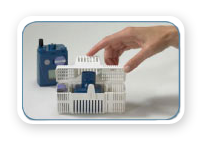 |
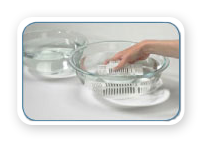 |
|
At the end of the day, remove the day's used chamber lids from the orange carrying case and place them in the mesh wash basket. |
Place mouthpiece, medication chamber, and drug guide in main wash basket. |
Using only one drop of dishwashing liquid without bleach, fragrances, or antibacterial ingredients, wash in distilled water. Rinse in distilled water. Air dry for 2 hours before using again. |
Note: If you want, you can wash each chamber lid with mesh after each treatment instead of all at once at the end of the day. Use the same cleaning method described above.
Why cleaning with distilled water is so important
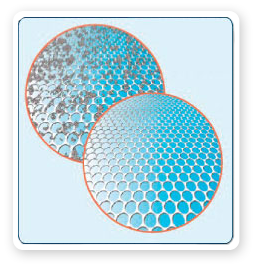
Each chamber lid with mesh has over 5000 tiny holes. If these holes are blocked, the I-neb AAD will not work as it should and your treatments may take longer. That's why it is important to use ONLY distilled water for your daily cleaning and weekly boil. Keeping the mesh clear of minerals can help you get the most out of your VENTAVIS treatments.
Once-Weekly Cleaning
Weekly boiling
- Put all of the parts (not the body) in the cleaning baskets.2
- Boil in distilled water with 1 drop of dishwashing liquid for 6 to 10 minutes. Do not microwave—some of the parts are metal. Also, do not wash in the dishwasher, because this may damage the parts.
- Rinse with distilled water.
- Shake off the water and then allow to air dry
A tip: Keep all of your supplies together to make it as easy as possible.
Learn the ABCs—Angle, Breathing, Cleaning—to make the most of your VENTAVIS treatment.
Read about:
WHAT IS VENTAVIS®?
VENTAVIS® is a prescription medicine used to treat adults with certain kinds of severe pulmonary arterial hypertension (PAH), a condition in which blood pressure is too high in the blood vessels between the heart and the lungs. VENTAVIS® may improve your ability to exercise and your symptoms for a short time by lowering your blood pressure and opening up the blood vessels in your lungs.
VENTAVIS® has not been studied in children younger than 18 years old.
IMPORTANT SAFETY INFORMATION
What should I tell my doctor before taking VENTAVIS®?:
VENTAVIS® may not be right for you.
Before taking VENTAVIS®, tell your doctor about all of your medical conditions, including if you:
- are pregnant, or plan to become pregnant. It is not known if VENTAVIS® can harm your unborn baby. VENTAVIS® should only be used during pregnancy if the benefit to you is worth the possible risk to your baby.
- are breast-feeding. It is not known if VENTAVIS® passes into your breast milk. You and your doctor should decide if you will take VENTAVIS® or breast feed.
Tell your doctor about all the medicines you take, including prescription and nonprescription medicines, vitamins, and herbal supplements.
VENTAVIS® and other medicines may affect each other causing side effects. VENTAVIS® may affect the way other medicines work, and other medicines may affect how VENTAVIS® works.
Especially tell your doctor if you take:
- medicines used to treat high blood pressure or heart problems
- medicines that lessen blood clotting (for example warfarin, Coumadin®, Jantoven®)
Know the medicines you take. Keep a list of your medicines and show it to your doctor and pharmacist when you get a new medicine.
How should I take VENTAVIS®?
- Take VENTAVIS® exactly as your doctor tells you to take it. Your doctor may change your dose if needed.
- You should not take VENTAVIS® more than every 2 hours. The benefits of VENTAVIS® may not last 2 hours, so you may adjust the times that you use it to cover planned activities.
- Do not drink VENTAVIS®.
- Do not let VENTAVIS® solution come into contact with your skin or eyes. If it does, rinse your skin or eyes with water right away.
- Do not allow other people to be exposed to VENTAVIS® while you are breathing it, especially babies.
- If you take too much VENTAVIS®, you may have a headache, red face, dizziness, nausea, vomiting and diarrhea. If this happens stop taking VENTAVIS®. If your symptoms do not go away, call your doctor or get emergency help right away.
What are the most common side effects of VENTAVIS®?
VENTAVIS® may cause side effects, including feeling dizzy, lightheaded and faint. If you have any of these side effects, you should stand up slowly when you get out of chairs or bed. Tell your doctor if your fainting gets worse during treatment with VENTAVIS®. Your doctor may need to change your dose or your treatment.
Do not drive a car or operate any tools or machines if dizziness or fainting from low blood pressure is a problem for you.
You may have trouble breathing after taking VENTAVIS® because it may cause the muscles around your airway to tighten (bronchospasm). Get emergency help right away if you have trouble breathing.
Other important side effects of VENTAVIS® include:
- bleeding
- red face (flushing)
- increased cough
- low blood pressure
- headaches
- nausea
- spasm of your jaw muscles that makes it hard to open your mouth
Talk to your doctor if you have any side effect that bothers you or that does not go away.
These are not all the possible side effects of VENTAVIS®. For more information, ask your doctor or pharmacist.
Call your healthcare provider for medical advice about side effects. You may report side effects to the FDA at 1-800-FDA-1088.
Please see full Prescribing Information and Patient Information for VENTAVIS® and discuss any questions you have with your doctor.
cp-134776v2